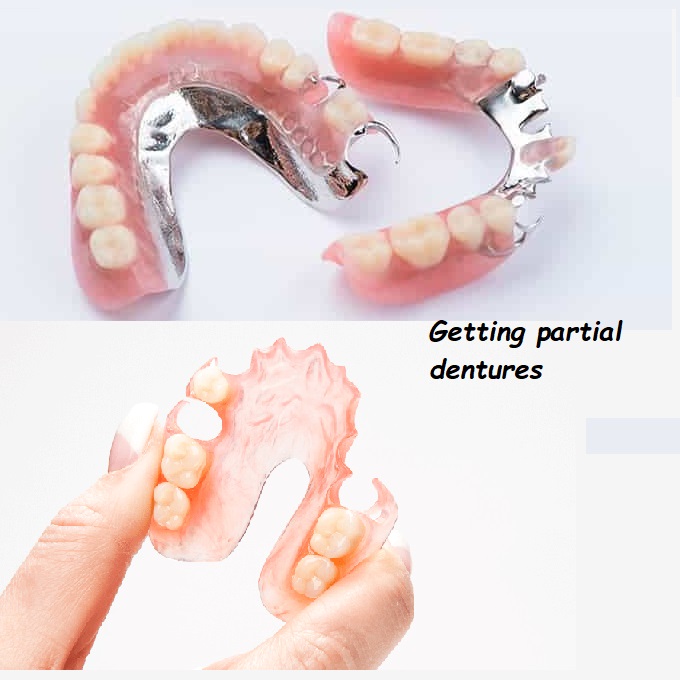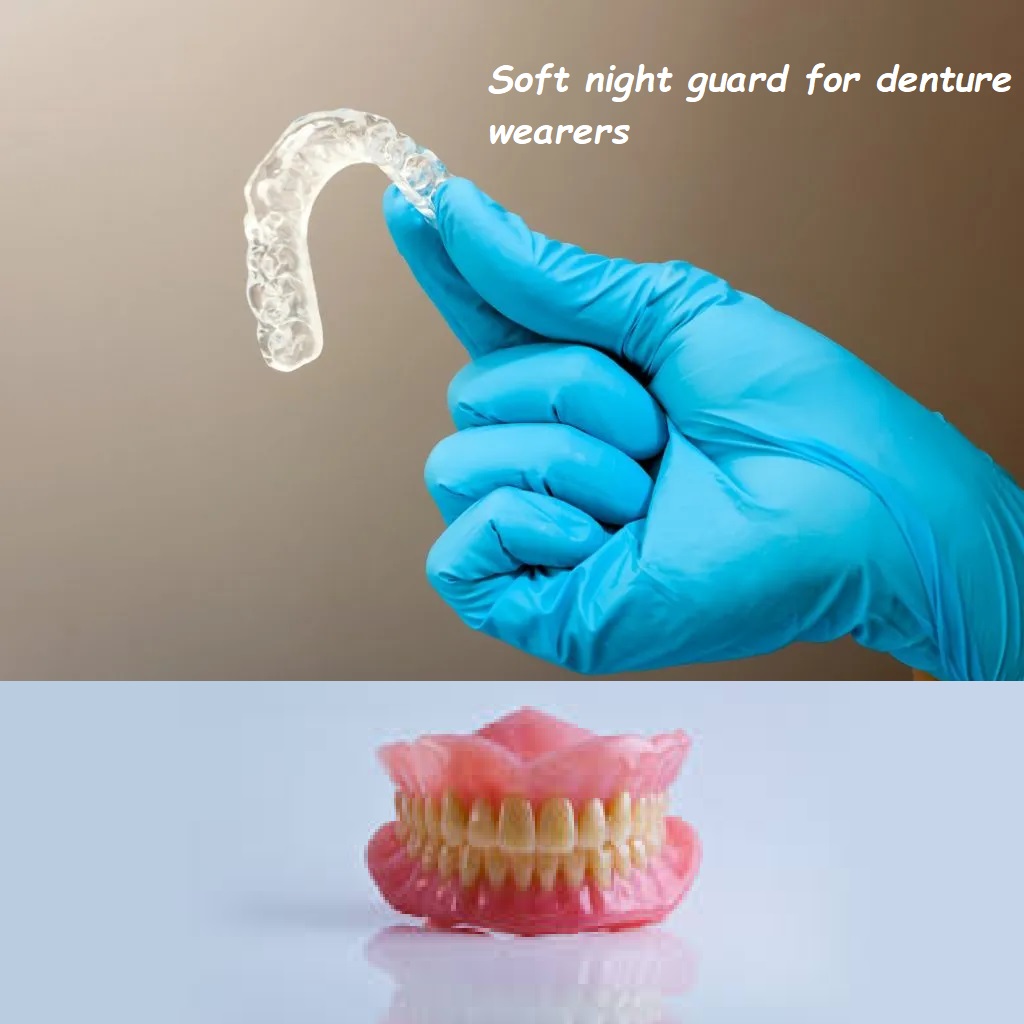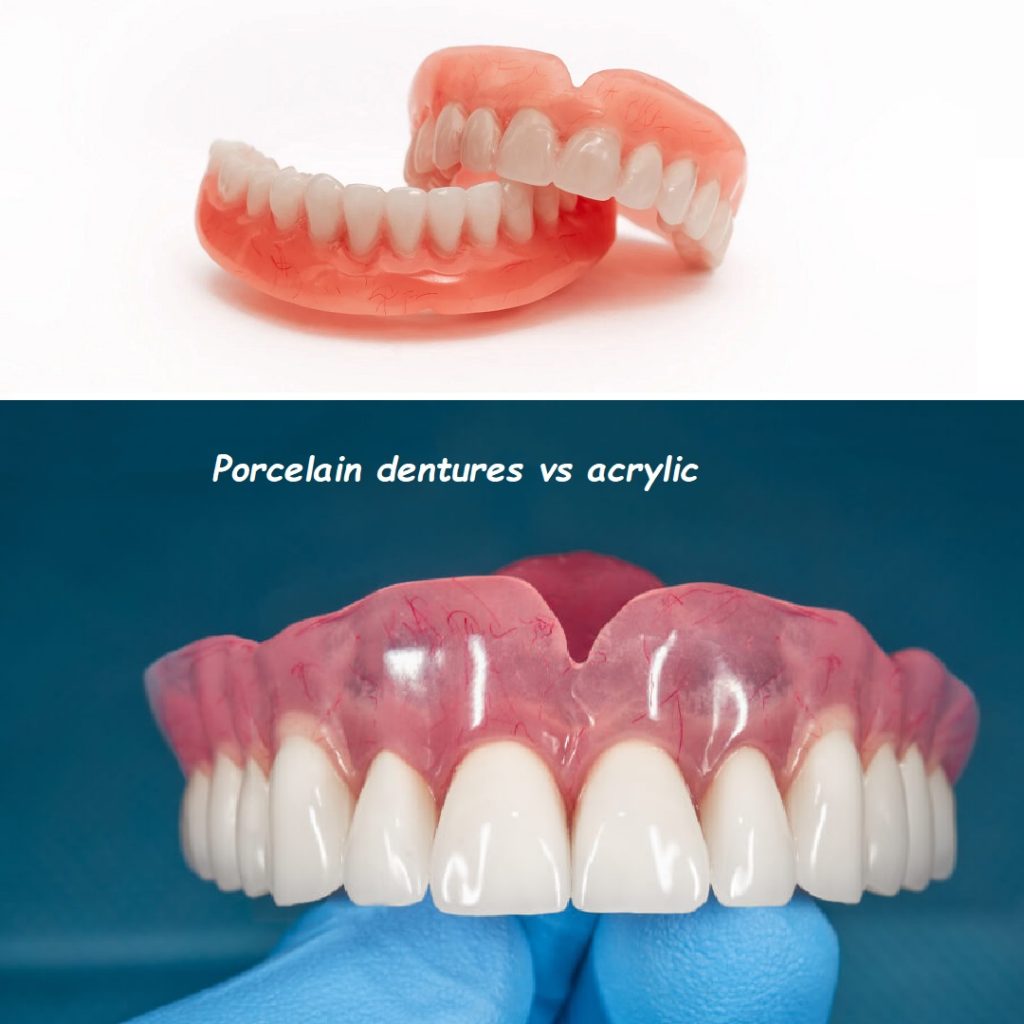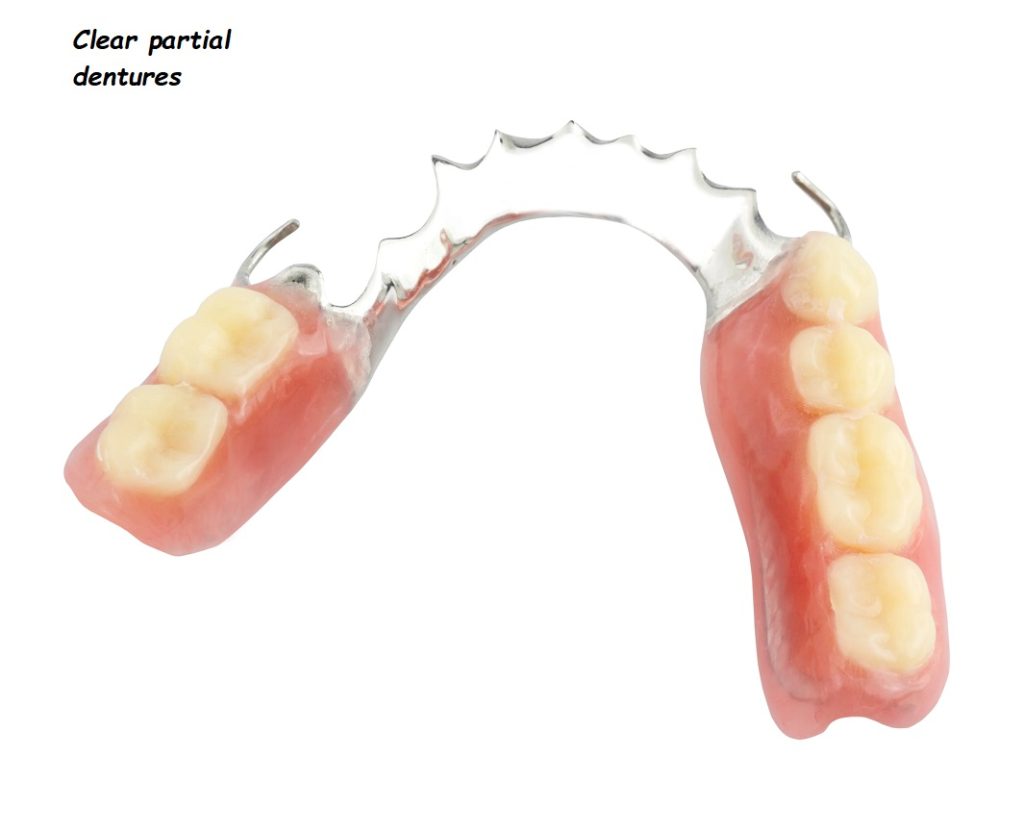Getting partial dentures

Getting Partial Dentures: Your Comprehensive Guide to a Confident Smile
Introduction:
Are you missing one or more teeth and wondering what options are available to restore your smile? Getting partial dentures could be the perfect solution for you. Whether you’ve lost teeth due to injury, decay, or age, partial dentures can help you regain not only your smile but also the ability to eat, speak, and live comfortably.
In this comprehensive guide, we’ll explore everything you need to know about getting partial dentures—from understanding what they are and the process involved to the benefits they offer and how to care for them. By the end of this article, you’ll have a clear understanding of whether partial dentures are the right choice for you and what steps to take next.
What Are Partial Dentures?
Partial dentures are removable dental appliances designed to replace one or more missing teeth in your mouth. Unlike full dentures, which replace all the teeth in an arch, partial dentures fill the gaps left by missing teeth while preserving your remaining natural teeth.
Key Features of Partial Dentures:
- Removable: Partial dentures can be easily removed for cleaning and maintenance.
- Custom-Fit: They are custom-made to fit your mouth, ensuring comfort and functionality.
- Metal Framework: Most partial dentures have a metal framework for added durability and stability.
- Aesthetic Appeal: Partial dentures are designed to blend in with your natural teeth, providing a seamless appearance.
Types of Partial Dentures:
- Acrylic Partial Dentures: These are typically used as a temporary solution and are made entirely of acrylic. They are lighter and less expensive but may not be as durable as other types.
- Cast Metal Partial Dentures: These are the most common type of partial dentures. They consist of a metal framework covered with acrylic that matches the color of your gums. They offer a strong, durable solution that fits securely in your mouth.
- Flexible Partial Dentures: Made from a flexible plastic material, these dentures are thinner and more comfortable than traditional acrylic or metal dentures. They are especially useful for patients who may have difficulty adjusting to other types of dentures.
The Process of Getting Partial Dentures
Getting partial dentures is a multi-step process that requires careful planning and collaboration between you and your dentist. Understanding the process can help alleviate any concerns you may have and ensure a smooth experience.
1. Initial Consultation:
Your journey to getting partial dentures begins with an initial consultation with your dentist. During this visit, your dentist will assess your oral health, discuss your needs and preferences, and determine if partial dentures are the right option for you. This is also a great time to ask any questions you may have about the procedure, costs, and what to expect.
2. Impressions and Measurements:
If partial dentures are deemed suitable for you, the next step is to take impressions of your mouth. These impressions are used to create a model of your teeth and gums, which will serve as the blueprint for your custom-made dentures. Accurate measurements are crucial to ensure a comfortable and precise fit.
3. Designing the Dentures:
Once the impressions are taken, your dentist will work with a dental lab to design your partial dentures. This process involves selecting the appropriate materials and customizing the shape, size, and color of the artificial teeth to match your natural teeth. The goal is to create a denture that not only fits well but also looks natural and enhances your smile.
4. Fitting the Partial Dentures:
After your dentures have been fabricated, you’ll return to your dentist for a fitting. During this appointment, your dentist will ensure that the dentures fit comfortably in your mouth and make any necessary adjustments. It’s important that the dentures fit snugly without causing discomfort or irritation.
5. Follow-Up Visits:
Getting used to partial dentures may take some time, and you may need to return to your dentist for follow-up visits to fine-tune the fit. Your dentist will check for any sore spots, ensure that the dentures are functioning correctly, and provide guidance on how to care for your new dentures.
Benefits of Getting Partial Dentures
Partial dentures offer numerous benefits for individuals who are missing teeth. Here are some of the key advantages:
1. Improved Aesthetics:
Partial dentures are designed to fill the gaps left by missing teeth, restoring your smile and facial appearance. With a custom-fit design, they blend seamlessly with your natural teeth, helping you feel more confident about your smile.
2. Enhanced Oral Function:
Missing teeth can make it difficult to chew food properly and may even affect your speech. Partial dentures restore the function of your teeth, allowing you to eat a wide variety of foods and speak clearly.
3. Prevents Tooth Shifting:
When you lose a tooth, the surrounding teeth may begin to shift out of place, leading to alignment issues. Partial dentures help keep your remaining teeth in their proper position, preventing misalignment and other dental problems.
4. Cost-Effective Solution:
Compared to dental implants or bridges, partial dentures are a more affordable option for replacing missing teeth. They provide a functional and aesthetic solution without the higher cost associated with more permanent restorations.
5. Easy to Adjust and Replace:
If your partial dentures become damaged or your mouth changes shape over time, they can be easily adjusted or replaced. This flexibility makes them a convenient option for many patients.
Challenges and Considerations
While partial dentures offer many benefits, there are also some challenges and considerations to keep in mind:
1. Adjustment Period:
Getting used to wearing partial dentures may take some time. You may experience minor discomfort or difficulty speaking and eating initially, but this typically improves as you adjust to the dentures.
2. Regular Maintenance:
Partial dentures require regular cleaning and maintenance to keep them in good condition. You’ll need to remove them daily for cleaning and soak them overnight in a denture solution.
3. Potential for Soreness:
It’s not uncommon to experience sore spots or irritation when you first start wearing partial dentures. Your dentist can make adjustments to alleviate any discomfort, but it’s important to address these issues promptly to avoid more significant problems.
4. Durability:
While partial dentures are durable, they are not as long-lasting as other tooth replacement options like dental implants. Over time, they may need to be repaired or replaced due to wear and tear.
How to Care for Your Partial Dentures
Proper care and maintenance are essential to ensure the longevity and effectiveness of your partial dentures. Here are some tips to keep them in excellent condition:
1. Clean Them Daily:
Just like natural teeth, partial dentures need to be cleaned daily to remove food particles, plaque, and bacteria. Use a soft-bristle toothbrush and a mild denture cleaner to clean your dentures thoroughly. Avoid using regular toothpaste, as it can be abrasive and damage the dentures.
2. Soak Them Overnight:
When you’re not wearing your partial dentures, soak them in a denture cleaning solution or plain water. This keeps them moist and prevents them from drying out and losing their shape. Never soak them in hot water, as this can cause the dentures to warp.
3. Handle with Care:
Partial dentures can be fragile, so handle them with care. When cleaning them, do so over a soft surface or a sink filled with water to prevent them from breaking if they’re accidentally dropped.
4. Regular Dental Check-Ups:
Schedule regular check-ups with your dentist to ensure your partial dentures are in good condition and that your mouth is healthy. Your dentist can make adjustments to the fit of your dentures if needed and check for any signs of wear or damage.
5. Maintain Good Oral Hygiene:
Even with partial dentures, it’s essential to maintain good oral hygiene. Brush your remaining natural teeth, gums, and tongue twice a day to prevent plaque buildup and keep your mouth healthy.
Alternatives to Partial Dentures
While partial dentures are a popular choice for replacing missing teeth, they’re not the only option available. Here are some alternatives you might consider:
1. Dental Implants:
Dental implants are a more permanent solution for tooth replacement. They involve surgically placing a titanium post into the jawbone, which serves as a stable base for a crown. Dental implants offer excellent durability and functionality, but they are also more expensive and require a longer treatment process.
2. Fixed Bridges:
A fixed bridge is another option for replacing missing teeth. It involves placing crowns on the adjacent teeth and attaching a false tooth (or teeth) between them. While fixed bridges are a reliable solution, they require the adjacent teeth to be healthy and may involve more dental work than partial dentures.
3. Full Dentures:
If you’re missing all of your teeth in an arch, full dentures may be the best option. Full dentures replace all the teeth in either the upper or lower jaw and are typically held in place by suction or adhesive.
Real-Life Experiences: What to Expect When Getting Partial Dentures
Hearing about others’ experiences with partial dentures can provide valuable insights and help set your expectations. Here are a couple of real-life scenarios:
Scenario 1: Maria’s Journey to a New Smile
Maria had been missing several teeth for years, which affected her ability to chew and made her self-conscious about her smile. After discussing her options with her dentist, she decided to get partial dentures. Initially, Maria found the adjustment period challenging, particularly when it came to speaking clearly. However, after a few weeks, she became accustomed to her dentures and was thrilled with the improvement in her smile and oral function.
Scenario 2: John’s Experience with Partial Dentures
John lost a few teeth in an accident and was worried about how it would affect his appearance and ability to eat. His dentist recommended partial dentures as a cost-effective and practical solution. John was impressed with how natural his dentures looked and how well they fit. With regular cleaning and care, his partial dentures have served him well for several years.
Common Questions About Getting Partial Dentures
1. How long does it take to get partial dentures?
The process of getting partial dentures typically takes several weeks. This includes the initial consultation, taking impressions, designing the dentures, and fitting them. The exact timeline can vary depending on your specific needs and the type of partial denture you choose.
2. Are partial dentures comfortable?
While there may be an adjustment period, most people find partial dentures to be comfortable once they’ve gotten used to them. Your dentist will work with you to ensure the best possible fit.
3. Can I eat normally with partial dentures?
Yes, partial dentures are designed to restore your ability to chew food effectively. However, you may need to start with softer foods and gradually reintroduce harder foods as you adjust to your dentures.
4. How long do partial dentures last?
With proper care, partial dentures can last several years. However, they may need to be adjusted, relined, or replaced over time due to normal wear and changes in your mouth.
5. Can I sleep with my partial dentures in?
It’s generally recommended to remove your partial dentures while sleeping. This gives your gums a chance to rest and helps prevent irritation or infection.
The Future of Partial Dentures: What to Expect
As dental technology continues to advance, the future of partial dentures looks promising. Patients can expect even more comfortable, durable, and aesthetically pleasing options in the coming years.
Innovations on the Horizon:
- Improved Materials: Advances in dental materials are leading to more natural-looking and comfortable partial dentures that are also more durable.
- Digital Dentures: The use of digital technology in creating partial dentures is becoming more common, resulting in more precise fits and faster production times.
- 3D Printing: 3D printing technology is revolutionizing the way dentures are made, offering the potential for quicker, more affordable, and highly customized solutions.
Conclusion: Is Getting Partial Dentures Right for You?
Getting partial dentures is a significant step toward restoring your smile and improving your quality of life. They offer a practical, cost-effective solution for replacing missing teeth while enhancing your oral function and appearance. If you’re considering partial dentures, take the time to consult with your dentist, explore your options, and ask any questions you may have.
Your Next Steps:
Ready to take the first step toward a more confident smile? Schedule a consultation with your dentist today to discuss whether partial dentures are the right choice for you. With the right care and maintenance, partial dentures can provide you with a durable and natural-looking solution for years to come.
Need More Information? We’re Here to Help!
If you have more questions about getting partial dentures or need guidance on your options, don’t hesitate to reach out. Our team is here to support you every step of the way on your journey to a healthier, more beautiful smile!









